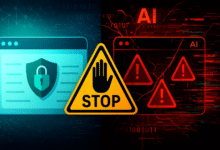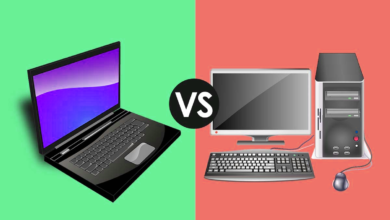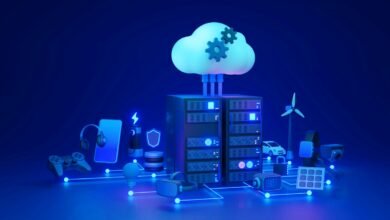
Do you know New Technology That Will Change The Industry in 2023? All facets of life and business are affected by digital revolution. New difficulties are emerging as the digital and physical worlds merge more closely. Digital Mara prepared the analysis of recent trends in technology. These include Web3, the Metaverse, autonomous systems, and industry cloud platforms.
Companies strive to increase their operational sustainability and offer sustainable goods and services. According to Gartner, a digital solution is sustainable if it produces favorable consequences for all market participants in terms of the environment, society, and government. This is the area where digital twins, automation, cloud computing, and AI will all continue to revolutionize.
Businesses utilize AI-based solutions to facilitate internal and external operations and offer services that enhance the user experience. By 2023, IDC predicts that global spending on AI technologies would total $500 billion. Technology enables businesses to become more resilient, expand their operations, and benefit from data-driven decision-making.
Internet transactions demand confidence. Internet transactions are growing in popularity among both consumers and companies. We need new security measures. This issue may be resolved by a decentralized network built using blockchain technology. This architecture takes into account coordinated digital ownership, as well as encryption for data storage and transport.
Let’s examine more closely at the technological advancements that impact development, perception, production, and more. User experience, business solutions, and online and mobile development can be used to categories trends.
Read More: The Dark Side of Technology Addressing Concerns and Risks
Tech Trends for Business Solutions

Autonomous systems
Automation is becoming more prevalent across a wide range of sectors and applications as businesses strive to be more rational and efficient. Most procedures can be automated using automated technologies. They reduce the time needed to do routine processes, boost productivity and accuracy, provide flexibility and data-driven insights.
They have a wide range of uses. In addition to manufacturing, transportation, logistics, delivery, healthcare, and energy solutions, they are also helpful in many other fields.
Autonomous systems have intricate architectures made up of numerous parts, including digital tools. The primary needs are real-time control, safety, and dependability. The system’s ability to adjust to shifting conditions and make independent decisions based on copious amounts of data is its key advantage.
IoT sensors, drones, enterprise resource planning, customer relationship management, and quality control systems are some of the sources of data collection for AI systems and automated quality management systems. To create this system, you’ll need a team that includes data scientists, programmers, system engineers, and data scientists.
Industry cloud platforms
Businesses may become more flexible, scalable, and process-efficient thanks to cloud computing. Industry-specific cloud platforms are created to satisfy the needs of sectors including healthcare, banking, government, and others.
They consist of a mix of platforms, software, and infrastructure-as-a-service. By 2027, cloud platforms will be used for more than half of essential corporate functions, according to Gartner. According to experts, this strategy provides businesses with greater value than the standard cloud.
A secure environment that complies with privacy and security standards, adheres to specified industrial procedures and situations, and manages multilayer duties can be built using cloud platforms. Workflows, APIs, and data models are all included in the toolkit. It is enhanced with cutting-edge features including AI, ML, IoT, blockchain, augmented reality, virtual reality, and blockchain. Enterprise receives a system that can process massive amounts of data and sustain tremendous loads.
Platform engineering
Platform engineering aims to increase developer efficiency, streamline procedures, and enhance user experience. Accelerating software delivery is also essential. These platforms come with pre-built toolkits, self-service options, reusable parts and services, and automated procedures. Team members receive the improved procedures and centrally managed infrastructure. Consistency and effectiveness in processes are also advantageous to businesses.
A platform for internal developers, security of the primary delivery process, internal service level agreements, and team performance indicators are the four main components of the platform’s construction. The platform can’t be used in every situation; instead, it should be customized for each company’s unique requirements. The requirements of consumers, developers, data processing experts, etc. determine specific functions.
Companies strive to increase their operational sustainability and offer sustainable goods and services. According to Gartner, a digital solution is sustainable if it produces favorable consequences for all market participants in terms of the environment, society, and government. This is the area where digital twins, automation, cloud computing, and AI will all continue to revolutionize.
Metaverse
Facebook and Mark Zuckerberg have a close connection to Metaverse. This idea, however, encompasses much more. This brand-new digital interaction has a realistic, immersive experience. As a result, consumers can have a real-world experience in virtual reality. In the Metaverse, there are five basic things that can be done, according to McKinney’s exposition.
They include social, gaming, and entertainment. It appears that this technology can be utilized to improve schooling. Meetings, conferences, and a variety of other events can be held in the Metaverse. Brands can use the metaverse to promote their goods or start advertising campaigns. Digital-twin model training and production are both feasible.
The creation of the metaverse can be a time-consuming process that involves numerous technical prerequisites. Basic technologies include edge computing, distributed computing, microservices, virtual and augmented reality (IoT), virtual and augmented reality (3D modelling), and artificial intelligence.
The infrastructure must be robust and all data must be safeguarded. The system needs to be able to resist a lot of loads because thousands of individuals can engage simultaneously and use various platforms and devices.
Yet things don’t seem to be going well. Businesses can invest in the metaverse, but returns are not always guaranteed. For instance, Meta, which invested $100 billion over the previous two years, has suddenly lost $3.7 billion. There are several reasons for this.
Start with unattractive avatars and a poor setting. end up with a lack of virtual reality video games and bad headset sales. Trust issues can harm a person’s reputation.
Chatbots with AI
Chatbots can be used for more than simply sales and customer service. Smart and capable of adjusting to customer talks. Depending on the algorithm’s sophistication, they can be used in social apps for dialogue, therapeutic apps for counselling, or educational applications for testing and general question-answering.
Moreover, chatbots can be used to support internal business processes and be incorporated into staff services like IT support, employee training, administrative support, and HR bots. Chatbots can be used to enhance messengers, apps, and webpages.
Natural language processing and machine learning models are the foundation of intelligent bots. They have the capacity to recall prior interactions, learn continuously, and provide more individualized communication.
This capability might not be sufficient. Additionally, you can incorporate automated translation to make chat multilingual and behavioral analytics to enhance embedded conversation flows. Consumers frequently provide private and sensitive information. Thus, data protection is essential.
sales and previous services. Smart and capable of adjusting to customer talks. Depending on the algorithm’s sophistication, they can be used in social apps for dialogue, therapeutic apps for counselling, or educational applications for testing and general question-answering.
Moreover, chatbots can be used to support internal business processes and be incorporated into staff services like IT support, employee training, administrative support, and HR bots. Chatbots can be used to enhance messengers, apps, and webpages.
Natural language processing and machine learning models are the foundation of intelligent bots. They have the capacity to recall prior interactions, learn continuously, and provide more individualized communication.
This capability might not be sufficient. Additionally, you can incorporate automated translation to make chat multilingual and behavioral analytics to enhance embedded conversation flows. Consumers frequently provide private and sensitive information. Thus, data protection is essential.
Multiexperience
The growing usage of speech, wearables, and AI makes multi-experience design conceivable. As a result, an engaging, integrated, and seamless experience is made possible across all digital touchpoints. The user can access your programmed through voice assistants, chatbots, and smartphone apps, among other channels. People can also communicate with it by touch, voice, and text.
You may expedite the process of creating and rolling out your app across a variety of devices with the help of multi-experience development platforms (MXDP). MXDP is described by Gartner as a combination of front-end and back-end development capability that enables you to construct apps that are appropriate for the task at hand based on touchpoint-specific modes. They work with cross-platform development, chatbots, AR apps, responsive web apps, progressive web apps, and apps for iOS and Android.
Voice search
Since that the majority of contemporary devices have speech recognition capabilities, your plan should include voice search optimization for our websites and apps. Digital voice assistants are expected to number 8.3 million by 2024, according to Statista. Customers utilize voice commands for smart home and automobile technology in addition to smartphones. This makes it possible to multitask, saves time, and frees up hands. This method of customer communication is quick and effective.
Software Development Trends
Web3
The HTML3 standard is a recent development. Although some recognise its promise, others are more wary. We may anticipate that this will alter both how users communicate with one another and the platforms’ design. Web3 is distinctive in that it disapproves of centralized systems or middlemen.
Peer-to-peer interactions are the norm. Opponents contend that while this system is unacceptable for private solutions, it is okay for public ones. Examples include NFTs, play-to-earn, and decentralized funding.
Decentralized autonomous organizations (DAO), Blockchain capabilities, and AI adaptive algorithms are all included in the technology stack for Web3 development. Semantic web, crypto payments, verifiable verification, and automation are a few of the major components. Nonetheless, it’s critical to protect privacy and cyber hygiene.
Low-code (no-code)
The use of low-code development is growing. As an alternative to conventional development, there are numerous low-code platforms accessible. They operate on a drag-and-drop interface and pre-configured templates as their guiding principles.
You can employ data science, testing, process automation, web, mobile, and IoT development. Using minimal resources, this strategy enables you to swiftly design and deploy applications. This is a workable choice for MVP development if you’re a startup.
While dealing with low-code or no-code, there are a number of things you need to be aware of. There are a lot of things to take into account while selecting a platform. Significant considerations include cloud support, interface with current systems, the amount of people using collaborative IDEs, multichannel deployment, and scalability.
Platforms could restrict your technical possibilities for modifying your code and might not permit customization. Professionals may find low code to be a helpful tool for saving time and money and validating concepts.
With the help of low-code/no-code development platforms, it is possible to create an app without coding. For example, you can build business applications, mobile apps, websites, e-commerce sites, management tools, accounting and finance apps, games, and SaaS solutions.
Read More: Pakistan Exported Technological Services for $1.3 Billion
Automation testing
Your QA plan should include automation testing. The products and services you offer to clients as well as your internal business processes depend on the quality of your software. Failures, freezes, and bug discoveries that are made too late can result in losses in both money and reputation.
Automation enables more thorough testing and continuous testing across the whole development cycle. Automation saves time and money because it is more accurate, effective, and dependable.
If you can test and debug your items quickly, you can deploy them more swiftly. How delighted your consumers are will depend on the caliber of your software. Automating tests is the job of a QA engineer.
The test’s capabilities can be improved with the aid of cutting-edge technologies like the cloud, artificial intelligence and machine learning, natural language processing, robotic process automation, and the cloud. In addition to many other things, you can design various testing settings, model actual conditions, and carry out extensive testing.
Last Words
The digital world evolves as new problems arise. Trends are being shaped by emerging technologies. Businesses must be agile and adaptive to these developments. In a market that is constantly evolving, keeping competitive requires an understanding of trends. You can change your strategy, look for possibilities for growth, and make investments in areas that interest you.












3 Comments